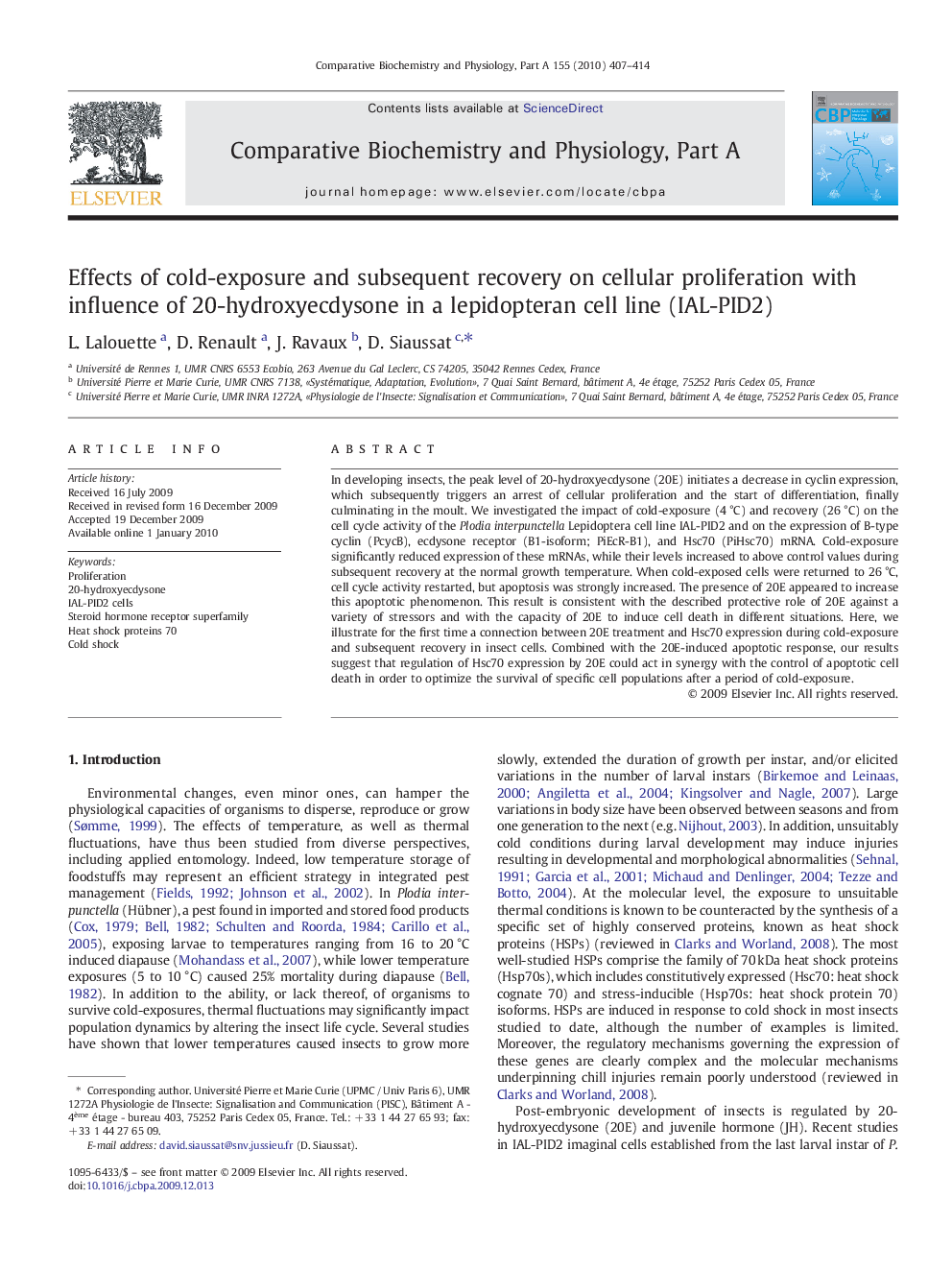| Article ID | Journal | Published Year | Pages | File Type |
|---|---|---|---|---|
| 1973067 | Comparative Biochemistry and Physiology Part A: Molecular & Integrative Physiology | 2010 | 8 Pages |
In developing insects, the peak level of 20-hydroxyecdysone (20E) initiates a decrease in cyclin expression, which subsequently triggers an arrest of cellular proliferation and the start of differentiation, finally culminating in the moult. We investigated the impact of cold-exposure (4 °C) and recovery (26 °C) on the cell cycle activity of the Plodia interpunctella Lepidoptera cell line IAL-PID2 and on the expression of B-type cyclin (PcycB), ecdysone receptor (B1-isoform; PiEcR-B1), and Hsc70 (PiHsc70) mRNA. Cold-exposure significantly reduced expression of these mRNAs, while their levels increased to above control values during subsequent recovery at the normal growth temperature. When cold-exposed cells were returned to 26 °C, cell cycle activity restarted, but apoptosis was strongly increased. The presence of 20E appeared to increase this apoptotic phenomenon. This result is consistent with the described protective role of 20E against a variety of stressors and with the capacity of 20E to induce cell death in different situations. Here, we illustrate for the first time a connection between 20E treatment and Hsc70 expression during cold-exposure and subsequent recovery in insect cells. Combined with the 20E-induced apoptotic response, our results suggest that regulation of Hsc70 expression by 20E could act in synergy with the control of apoptotic cell death in order to optimize the survival of specific cell populations after a period of cold-exposure.
